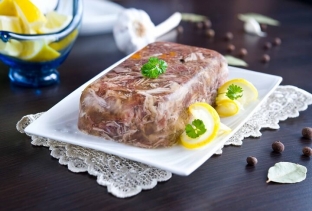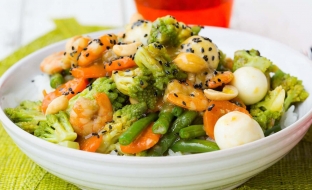Arthrosis of the joints – it is a predominantly age-related disease that affects the joints (causing deformity) of people over the age of 45. However, this disease also occurs at a younger age, more often in women than in men.
The main symptoms of arthrosis:
- severe pain in a joint or joints;
- reduced joint mobility.
It is important to understand that the lack of timely treatment can lead to a complete loss of mobility of the joints affected by this disease. The fact is that the deformation of the cartilage in arthrosis consists not only in its destruction in the "right places", but also in the growth to where it does not belong, as a result of which joint mobility becomes impossible.
Among the main causes of arthrosis are:
- genetic predisposition;
- obesity (overweight);
- surgery or joint injury.
Treatment of arthrosis: rules to follow
Unfortunately, it is impossible to reverse the process of joint cartilage deformation. The complexity of the treatment of arthrosis lies in the fact that a remedy that could simultaneously restore the destroyed “useful” sections of cartilage and at the same time prevent the growth of “harmful” simply does not exist.
The only thing that can be done in case of arthrosis of the joints – prevent further degenerative changes. And in this, the main means are proper nutrition, well-chosen exercises by a qualified specialist, as well as a complete rejection of bad habits.
With regard to nutrition for arthrosis, it must be understood that the diet should be balanced: a lack of vitamins, fats, carbohydrates, proteins or trace elements should not be allowed.
What you can eat with arthrosis of the joints, and what you can’t
The following products should not be consumed in case of arthrosis of the joints:
- sugar and products containing it;
- salt (if possible, limit to 8 grams per day or eliminate altogether);
- alcohol;
- fatty meats and cheeses, whole milk;
- mayonnaise;
- smoked meats, pickles;
- refined vegetable oil;
- mineral water with a high salt content;
- sausages, sausage;
- fried foods;
- rich broths;
- fresh bread.
What is it necessary to eat with arthrosis of the joints?
- Jelly (without dyes and flavors!);
- Gelatin;
- Products containing vitamins and microelements (fresh fruits and vegetables, fish, liver, egg yolk, seafood, beans, bananas, buckwheat, oats, avocados, broccoli, etc.).
It is important to know that proper nutrition for arthrosis of the joints is not only the use of certain foods and the exclusion of others from the diet. Arthrosis of the joints also limits the methods that can be used for cooking products: they should never be fried, i.e. only boiled or, even better, steamed food is allowed.
Taking into account the above recommendations, you can choose your favorite products and combine them into dishes according to your own taste. The main thing is that they are not fried, sweet, too fatty or salty. In addition, you can try our proposed recipes for delicious dishes that will not aggravate arthrosis of the joints.
Recipe #1 – Jellied
It takes a lot of time to prepare a traditional jelly and, despite the fact that this dish is recommended to be included in the diet of patients with arthrosis of the joints, many simply do not find free time to cook it. If you are one of these people, we present to your attention a recipe for a faster and more unusual jelly – with fish and tomatoes.
What you will need:
- fish fillet (e.g. zander, carp, etc.) – 400 grams;
- gelatin – 10 plates;
- tomato juice – 1 cup;
- bow – 1 piece;
- peppercorns – 6 pcs;
- bay leaf – 1 piece;
- lemon juice - tbsp;
- vinegar – 1 tbsp;
- salt (be aware of the limits!).
- spices can be added to taste.
Cooking process:
1. Pour water over gelatin.
2. Pour 0.5 l of water into a deep frying pan, throw onion, peeled and chopped into large rings, lemon juice and spices. Let the water boil.
3. After boiling, throw the fish fillet into the pan, cook for 10 minutes.
4. When the fillet has cooled, chop it (cut into cubes or tear into pieces).
5. Pour strained fish broth into a saucepan, add tomato juice and vinegar, add spices and heat (do not boil).
6. Heat the gelatin until it dissolves and then add it to the broth.
7. Pour the resulting tomato broth into the bottom of the mold for jelly and leave in the refrigerator to solidify.
8. Put the chopped fish fillet on the frozen base,

What you will need:
- shrimp – 500 grams;
- bulb – 1 piece;
- sweet pepper – 1 piece;
- garlic – about 3 cloves (can be less);
- olive oil (unrefined, any vegetable oil you use must be unrefined) – 3 tbsp;
- parsley – 1 tbsp;
- spices and spices to taste.
1. Mix the peeled shrimp with garlic, oregano and spices.
2. Pour a tablespoon of olive oil over the shrimp.
3. Cut the onion and pepper into half rings.
4. Grease the form with oil, put vegetables on it, add shrimp on top.
5. Cover with foil and steam for 15 minutes.
6. Before serving, decorate the dish with herbs and, if necessary, drizzle with the remaining oil.

Since arthrosis of the joints allows (and even requires) eating meat, you can easily cook, for example, lean pork or steamed beef – as a separate dish, and with potatoes. Fortunately, if you have a double boiler or a slow cooker, the field for fantasy is practically unlimited.
Estet-portal reminds you that proper nutrition will not only help make the treatment of arthrosis of the joints more effective, but also improve your overall health. Do not forget that the best diet can be selected by a qualified dietitian!






Add a comment